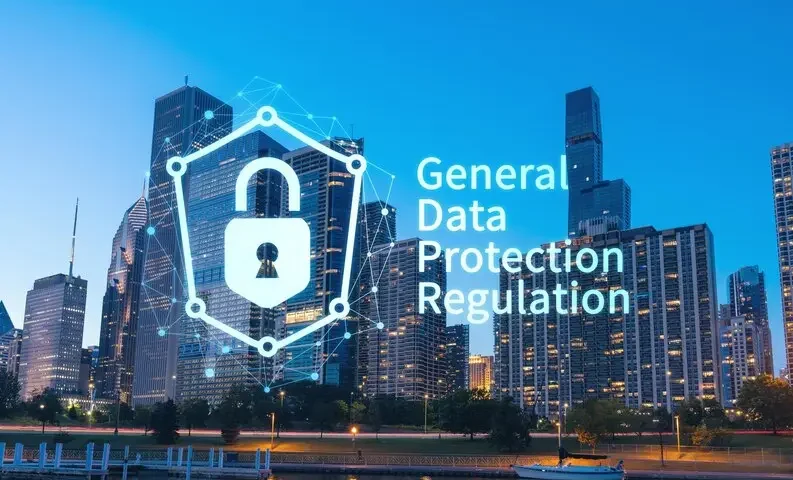
Introduction
In today’s interconnected world, critical infrastructure plays a vital role in ensuring the functioning of essential services such as energy, transportation, telecommunications, and finance. However, as technology advances and our reliance on interconnected systems grows, protecting critical infrastructure from cyber threats has become increasingly important.
This article explores the significance of cybersecurity in safeguarding critical infrastructure and the measures that can be taken to mitigate risks.
Also read: The most dangerous security vulnerabilities on smartphones (moumentec.com)
Understanding Cybersecurity
Cybersecurity is the practice of safeguarding networks, devices, and data from damage, loss, or unauthorized access. Just as physical security protects buildings and their occupants from various physical threats, cybersecurity shields digital technologies and their users from digital dangers1. It encompasses a wide range of measures and practices to prevent cyberattacks or mitigate their impact.
Here are some key concepts related to cybersecurity:
- Confidentiality: This principle defines rules that limit access to information. It ensures that sensitive data remains private and accessible only to authorized individuals.
- Integrity: Ensuring data consistency, accuracy, and trustworthiness over time. It means that information remains unaltered and reliable.
- Availability: Ensuring all necessary components (hardware, software, networks, devices, and security) are accessible when needed2.
Cybersecurity is crucial because it protects individuals, organizations, and critical infrastructure from various threats. These threats include computer viruses, sophisticated ransomware attacks, and more. The cost of data breaches continues to rise, emphasizing the importance of robust cybersecurity practices. For instance, in 2023, the average cost of a data breach was $4.45 million, with ransomware-related breaches even higher at $5.13 million (excluding ransom payments). By 2025, cybercrime could cost the global economy an estimated $10.5 trillion annually2.
As technology trends evolve, including cloud computing adoption, network complexity, remote work, and connected devices, the opportunities for cybercriminals to attack also increase. Addressing the global cybersecurity worker gap (currently 3.4 million workers worldwide), organizations focus on comprehensive strategies that leverage advanced analytics, artificial intelligence, and automation to combat cyberthreats effectively2.
Remember, cybersecurity is not just about protecting systems; it’s about safeguarding our digital way of life and ensuring a secure online environment for everyone.
Risks to Critical Infrastructure
Critical infrastructure encounters a diverse array of cyber threats and attacks. These threats originate from various sources, including malicious actors such as hackers, cybercriminals, and nation states. Their primary objectives involve compromising critical infrastructure to achieve different outcomes:
- Disruption of Services: Malicious actors aim to disrupt essential services provided by critical infrastructure. This disruption can lead to widespread inconvenience, affecting everything from power grids to communication networks.
- Sensitive Information Theft: Another risk involves stealing sensitive information. By infiltrating critical infrastructure systems, attackers can gain unauthorized access to valuable data, compromising privacy and security.
- Physical Damage: Cyber attacks can extend beyond digital realms, potentially causing physical damage. For instance, compromising control systems in a power plant could lead to equipment failures or even catastrophic incidents.
The consequences of successful cyber attacks on critical infrastructure are far-reaching and severe:
- Financial Losses: Organizations responsible for critical infrastructure may suffer significant financial losses due to service disruptions, recovery costs, and legal liabilities.
- Service Disruptions: Disruptions to critical services impact daily life, affecting transportation, healthcare, communication, and more.
- Compromised Public Safety: When critical infrastructure fails, public safety is at risk. Emergency services, hospitals, and law enforcement rely on functioning infrastructure to save lives.
- Loss of Human Life: In extreme cases, cyber attacks can directly or indirectly lead to loss of human life. For example, compromised medical systems could affect patient care.
In summary, safeguarding critical infrastructure against cyber threats is crucial to prevent these adverse outcomes and maintain societal stability and safety12.
Importance of Protecting Critical Infrastructure
Critical infrastructure protection plays a vital role in ensuring the continuity of essential services and has far-reaching implications for society. Here’s why safeguarding critical infrastructure matters:
- Economic Impact: Disruptions to critical infrastructure can lead to substantial financial losses for businesses and the overall economy. When essential services falter due to cyberattacks or other threats, productivity declines, supply chains are disrupted, and economic stability is jeopardized.
- National Security: The compromise of critical infrastructure poses a direct threat to national security. Defense capabilities, emergency response systems, and other crucial functions rely on the proper functioning of infrastructure. Any disruption can weaken a nation’s ability to defend itself and respond effectively to emergencies.
- Public Safety and Well-Being: The safety and well-being of the public hinge on the reliable operation of critical infrastructure. From clean water supply to electricity grids, transportation networks, and healthcare services, our daily lives depend on these systems. Ensuring their security is essential for protecting lives and maintaining societal stability.
In summary, safeguarding critical infrastructure is not only an economic imperative but also a matter of national security and public welfare123.
Key Elements of Cybersecurity for Critical Infrastructure
Let’s delve into the Key Elements of Cybersecurity for Critical Infrastructure:
- Risk Assessments and Vulnerability Management:
- Organizations overseeing critical infrastructure must conduct thorough risk assessments. These assessments help identify potential weaknesses and vulnerabilities within the infrastructure.
- Vulnerability management involves continuously monitoring and addressing security gaps. It ensures that any emerging threats are promptly mitigated.
- Network Security Measures:
- Implementing robust network security measures is crucial. These measures protect critical systems and data from cyber threats.
- Examples of such measures include:
- Firewalls: These act as barriers between internal networks and external threats, filtering incoming and outgoing traffic.
- Intrusion Detection Systems (IDS): IDS monitors network traffic for suspicious activities or unauthorized access attempts.
- Encryption Protocols: Encrypting data ensures its confidentiality during transmission and storage.
- Incident Response and Recovery Plans:
- Organizations should develop comprehensive incident response and recovery plans.
- These plans outline steps to take when a cyber incident occurs, including:
- Detection: Identifying the breach or attack.
- Containment: Isolating affected systems to prevent further damage.
- Eradication: Removing the threat.
- Recovery: Restoring systems to normal operation.
- Lessons Learned: Analyzing the incident to improve future responses.
By implementing these key elements, critical infrastructure can enhance its cybersecurity posture and better protect against cyber threats123.
Collaboration and Cooperation
Protecting critical infrastructure requires collaboration and cooperation between various stakeholders. Governments play a crucial role in setting regulations and standards to ensure the security of critical infrastructure.
Public-private partnerships can facilitate the exchange of information, expertise, and resources to enhance cybersecurity practices. By working together, governments, businesses, and cybersecurity professionals can strengthen the defense against cyber threats to critical infrastructure.
Challenges in Protecting Critical Infrastructure
Protecting critical infrastructure poses several challenges. Cyber threats evolve rapidly, requiring organizations to continuously adapt and update their cybersecurity measures. Many organizations face limited resources and expertise, making it challenging to implement robust security measures.
Additionally, the presence of legacy systems and infrastructure can create vulnerabilities that are difficult to address. Overcoming these challenges requires ongoing investments in cybersecurity capabilities and the adoption of innovative solutions.

Future Trends in Critical Infrastructure Protection
As technology continues to advance, new trends emerge in critical infrastructure protection. Artificial intelligence and machine learning can enhance threat detection and response capabilities, enabling organizations to identify and mitigate cyber threats more effectively.
The Internet of Things (IoT) introduces new security challenges, and securing interconnected devices becomes crucial. Cloud-based security solutions offer scalability and flexibility, allowing organizations to protect critical infrastructure efficiently.
Conclusion
The growing importance of cybersecurity in protecting critical infrastructure cannot be overstated. With the increasing complexity and sophistication of cyber threats, organizations and governments must prioritize the implementation of robust cybersecurity measures.
By collaborating and sharing knowledge, we can enhance the security of critical infrastructure and ensure the continued functioning of essential services that underpin our modern society.
The most dangerous security vulnerabilities on smartphones
FAQs
1- Why is protecting critical infrastructure important?
Protecting critical infrastructure is essential to maintain the functioning of essential services, ensure public safety, and safeguard the economy and national security.
2- How can organizations assess the risks to their critical infrastructure?
Organizations can conduct comprehensive risk assessments that evaluate vulnerabilities, potential threats, and the potential impact of cyber-attacks on critical infrastructure.
3- What are some examples of cyber threats to critical infrastructure?
Examples of cyber threats to critical infrastructure include ransomware attacks, distributed denial-of-service (DDoS) attacks, and sophisticated nation-state cyber espionage campaigns.
4- What role does the government play in protecting critical infrastructure?
Governments play a crucial role in establishing regulations, standards, and initiatives to enhance the security of critical infrastructure. They also facilitate collaboration between the public and private sectors.
5- How can businesses collaborate with the government to enhance critical infrastructure protection?
Businesses can engage in public-private partnerships, share threat intelligence, participate in cybersecurity exercises, and follow government guidelines and best practices to enhance critical infrastructure protection.




